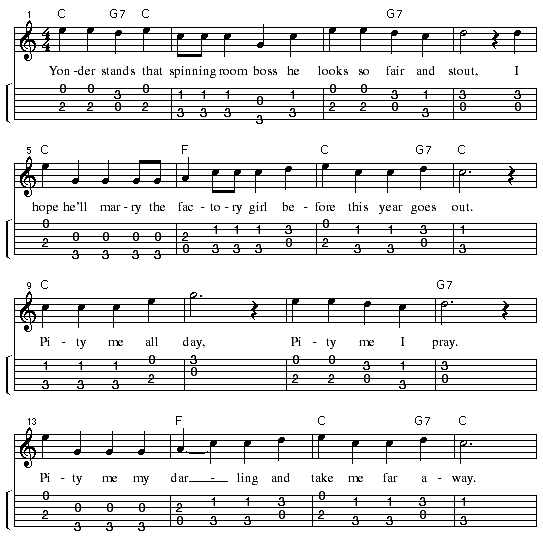
If you associate the Industrial Age with steel mills, steam engines and machine shops, it's surprising to learn that it started with the invention of a flying-shuttle mechanical loom that could weave cotton faster than the dickens. Cotton processing is a complicated deal, even at its simplest. In addition to cultivating and harvesting, you have to remove the seed and dirt, which is now done by a cotton gin. The cotton is then baled for transportation. At a mill, the bales are picked apart and the cotton cleaned some more. After the carding room, its fibers untangled and aligned, it goes to the spinning room where it's spun into the proper size thread, to be turned into cloth in the weave room. Previously, this was all done by hand, not in a mill but as a cottage industry. The new fast loom used more yarn than could be made by hand, so the demand up the line led to the invention of complex machines for each process. They all required power, so the machines were concentrated at a mill with a waterfall. Automation didn't rule out labor -- the temperamental Rube Goldberg devices required constant tending, not just for adjustment and repair, but also to doff bobbins when they got full, clean out lint, re-string looms, and move material from room to room, so lots of cheap help was needed. Initially, this meant the importation to mill towns of surplus workers: children, typically starting at age 8, and unmarried girls. The American mills started in New England, but as unions and other job opportunities arose, they moved to the southeastern states, attracting desperately poor people from marginal mountain farms to work 70-hour weeks in the valleys. The mills built towns from scratch to house the workers, adding such amenities as company stores that took back meager wages in payment for marked-up necessities. From 1900-1920, the number of southeastern mills doubled, while the northeastern mills declined, steepening into virtual extinction during the depression. The south remained essentially rural, without the northern industrial labor concentrations. Union movements without a broad base could be easily broken. The few strikes that occurred often turned violent.
Traditional songs about cotton mills are common. John Greenway (American Folksongs of Protest, Univ. of Pa., 1953) theorizes that the monotony and machine rhythms encourage you to sing while working. Conversely, the noise meant that no other worker could hear your songs unless you also sang them after work. Some are specially composed pro-union songs, protesting awful conditions. Others, such as Factory Girl, mildly protest, expressing an escapist rather than organizational approach. The earliest known version of this song was a broadside published in Lowell, MA, around 1830. It evidently traveled south with the mills. This one is sung by Marcia Pankake of the Brandy Snifters. She performs it with authority, as she did hard time at a coat factory when she was young. She learned the song from Dorsey and Nancy Dixon on an LP Babies in the Mill (re-released as a CD on the HMG/High Tone label). The Dixon family were mill workers from Darlington, SC. Dorsey composed many songs, including several about cotton mills, and with his brother Howard, recorded them. We padded Factory Girl from Greenway's book by adding the penultimate verse.

Complete lyrics:
Yonder stands that spinning room boss,
He looks so fair and stout;
I hope he'll marry a factory girl
Before this year goes out.
CHORUS:
Pity me all day,
Pity me I pray;
Pity me my darling
And take me far away.
No more I'll hear that whistle blow,
The sound of it I hate;
No more I'll hear that boss man say,
"Young girl, you are too late."
CHO.
No more I'll wear an old black dress,
Greasy all around;
No more I'll wear an old black bonnet
With holes all in the crown.
CHO.
No more I'll hear that roaring,
That roaring over my head;
While you poor girls are hard at work,
I'll be home in bed.
CHO.